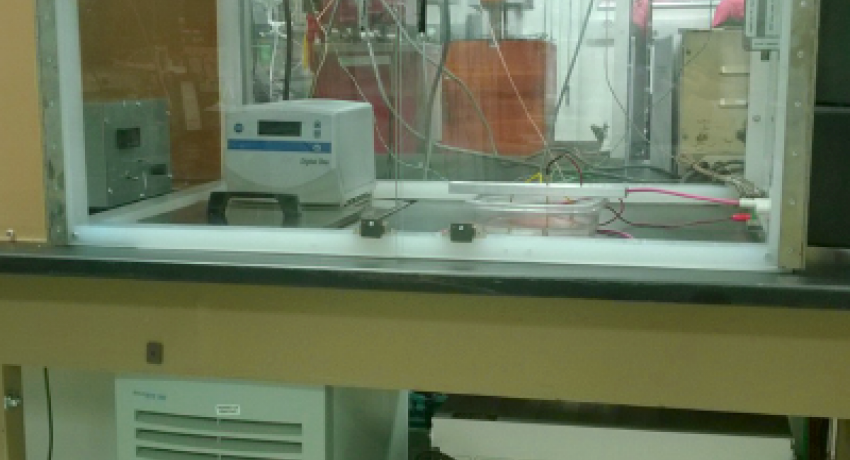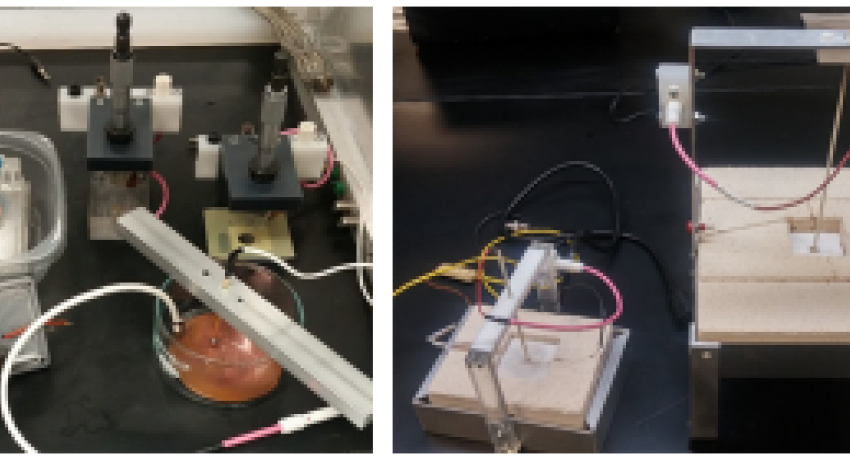High Voltage Breakdown Measurement
Dielectric breakdown is the failure of an insulating material to prevent the flow of current under an applied electrical stress. The breakdown voltage is the voltage at which the failure occurs, and the material is no longer electrically insulating.
Dielectric breakdown voltage is determined by:
- Linearly increasing the voltage (AC or DC) and recording the failure voltage on several samples.
- Applying statistical analysis to calculate the dielectric breakdown voltage, commonly following Weibull analysis.
The mechanisms governing the dielectric breakdown of any given insulator include intrinsic electrical (electronic), thermal, and electromechanical breakdowns. The extent of their contributions depend on the inherent properties of the material tested.
The Dielectric Breakdown System
Sample Fixtures and High Temperature Stages.
In-house system integrating a Trek 30kV amplifier with LabView software for control and data acquisition.
- Temperature Range: Room Temperature to 200°C
- Maximum Voltage: 30kV
- Applied Voltage Ramp: DC or AC (up to 500Hz)
- Environment: Galden® oil or air
- Samples: Multiple fixtures accommodate a variety of sample sizes and materials. Samples can either be with or without electrodes
References:
IEC/IEEE Guide for the Statistical Analysis of Electrical Insulation Breakdown Data (Adoption of IEEE Std 930-2004)," in IEC 62539 First Edition 2007-07 IEEE 930.
L. A. Dissado and J. C. Fothergill, Electrical Degradation and Breakdown in Polymers, Peter Peregrins Ltd., London, UK, 1992.
Förster-Zügel et al., "Characterization of the dielectric breakdown strength of thin elastic films in various ambient media," 2016 IEEE International Conference on Dielectrics.



